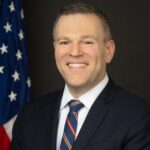One of the most controversial issues facing the energy world today is how our electric sector will respond to the U.S. Environmental Protection Agency’s (EPA’s) proposed Clean Power Plan (CPP). If finalized, the CPP would, under Section 111(d) of the Clean Air Act, require states to significantly reduce carbon dioxide emissions from existing power plants.
The Federal Energy Regulatory Commission (FERC) is not an environmental regulator, and is not tasked with writing the final rule—that is clearly the EPA’s responsibility. And FERC is not responsible for developing implementation plans—that is the states’ responsibility. But FERC will have an essential role to play as the CPP is implemented.
I believe that we as a nation can achieve real environmental progress, including on climate change, but only if we’re willing to build the infrastructure—both gas and electric—and adapt the energy markets to make that possible.
That is where FERC comes in. We will have responsibilities across three areas: infrastructure, markets, and convening and facilitating discussions about how to balance the core values of reliability, cost, and the environment.
Infrastructure Development
First, I believe that additions to both gas and electric infrastructure will be needed to implement the CPP. In the case of interstate natural gas facilities, FERC is responsible for issuing permits—which includes performing environmental reviews—and setting rates.
Building block two of the CPP calls for substantially increasing the utilization of the natural gas plants that exist all around the country. I believe the CPP will also lead to construction of additional gas generation because it may be, in many areas, the most cost-effective way to meet the overall targets of the plan. But while new gas infrastructure will be needed, it is facing unprecedented opposition from local and national groups. Our nation is going to have to grapple with our acceptance of gas generation and gas pipelines if we hope to achieve our climate and environmental goals.
FERC’s responsibility under the Natural Gas Act is to consider and act on pipeline applications, ensuring that needed pipelines can be built safely and with limited environmental impact. Our work on gas infrastructure permitting is going to be essential to the successful implementation of the CPP. I am dedicated to ensuring that the process is fair, clear, timely, and transparent.
FERC is also going to have a role to play in facilitating the development of electric transmission that will need to be built to support compliance with the CPP. Building Block 3 of the CPP points to increasing reliance on location-constrained renewable generation like wind and utility-scale solar that, because they are usually built far from population centers, are highly transmission-dependent.
Although electric transmission siting decisions are made at the state level, FERC is responsible for planning and setting rates for interstate transmission. FERC is working hard to help needed transmission get built by implementing our landmark Order No. 1000, which requires broad, transparent, and competitive transmission planning processes that explicitly consider public policy requirements, like state implementation plans under the CPP. These processes are intended to result in the most cost-effective projects, not just for one small area, but for an entire region and even between regions. We also ensure that needed lines are built at reasonable cost by balancing the needs of investors and consumers in approving fair rates and incentives.
Market Adaptation
Second, FERC will have a great deal of work to do to adapt wholesale electric markets to the CPP. Regional capacity and energy markets incentivize investment and dispatch power over large regions based on cost. Both have made some limited adaptations to support state environmental preferences like renewable portfolio standards, but not always easily.
However, under the CPP, 49 states will develop individual implementation plans that will require changes in utilization of power sources. These plans may not be automatically compatible with the existing least-cost model. Regional cooperation will help markets make these adaptations, but that cooperation itself will require considerable change and compromise.
So FERC, the market operators, and stakeholders will have to work together to adapt the existing market model to support the state plans while still delivering the benefits of competition. FERC will also need to continue to ensure that markets support investment in resources needed for reliability. Our fuel assurance order issued earlier this year is one example of this effort.
Honest Broker
FERC’s final job is to serve as an honest broker as work on the CPP is finalized and implemented. We are beginning this effort with a series of technical conferences to examine reliability, infrastructure, and market issues tied to the CPP. Our objective is to hear from a wide range of entities about how compliance with the rule might impact them and to begin to prepare for the work FERC will need to do as compliance moves forward. We must also continue our engagement with agencies, especially the EPA and the states, to lend our expertise, share information, and provide constructive suggestions.
I am honored to be a part of FERC’s work, and look forward to continuing change, challenge, and progress on the nation’s energy and environmental aspirations. ■
— Cheryl LaFleur is chairman of the Federal Energy Regulatory Commission.









